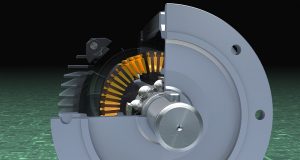
Pickling, not to be confused with the vinegar-based food preservation process, is a metalworking treatment process that’s used to remove impurities and contaminants from metal objects and workpieces. It involves the use of an acid-based solution, known as pickle liquor, to descale the surface of metal objects and workpieces. When the object or workpiece is submerged in the pickle liquor, superficial impurities and contaminants are dissolved. With that said, pickling offers both advantages and disadvantage when used in the metalworking industry.
Pickling Pros
When performed on a metal object or workpiece, pickling will create a cleaner and smoother surface. It’s a simple, low-cost and relatively easy process that’s highly effective at treating metal surfaces. The pickle liquor’s acidic properties allow it to eat away at impurities and contaminants on the surface, resulting in a cleaner and smoother surface.
In jewelry, pickling is often performed to eliminate the unsightly layer of copper oxide. Copper and sterling silver jewelry often features a layer of copper oxide as a byproduct of soldering and heating. While this layer of copper oxide doesn’t affect the physical integrity of copper and sterling silver jewelry, it creates a tarnished appearance. Manufacturers can eliminate the copper oxide layer by pickling the jewelry in a pickle liquor.
There are other finishing processes that can treat the surface of metal objects and workpieces. However, none of them offer the same level of uniformity as pickling. Pickling doesn’t leave blemishes or other areas of uneven coloring. After being submerged in the pickle liquor, the metal object or workpiece will have a uniform color and appearance.
Pickling Cons
While there are plenty of advantages associated with pickling, there are also disadvantages associated with this metalworking process. Pickling, for example, can be somewhat technical, depending on the type of metal that’s being pickled. Traditional high-carbon steel required nothing more than a pickle liquor of sulfuric acid or hydrochloric acid. Low-carbon steel, on the other hand, requires a multi-step pickling process that involves the use of both phosphoric nitric as well as hydrofluoric acid.
Pickling also creates waste as a byproduct. Known as sludge, it consists of acidic liquids, iron chlorides, metallic salt compounds and other impurities. And since the Environmental Protection Agency (EPA) classified pickling sludge as hazardous waste, metalworking companies must take extra care when handling and disposing of it.
In Conclusion
To recap, pickling is a metalworking finishing process that involves the use of an acidic liquid, known as pickle liquor, to descale and clean metal objects and workpieces.
